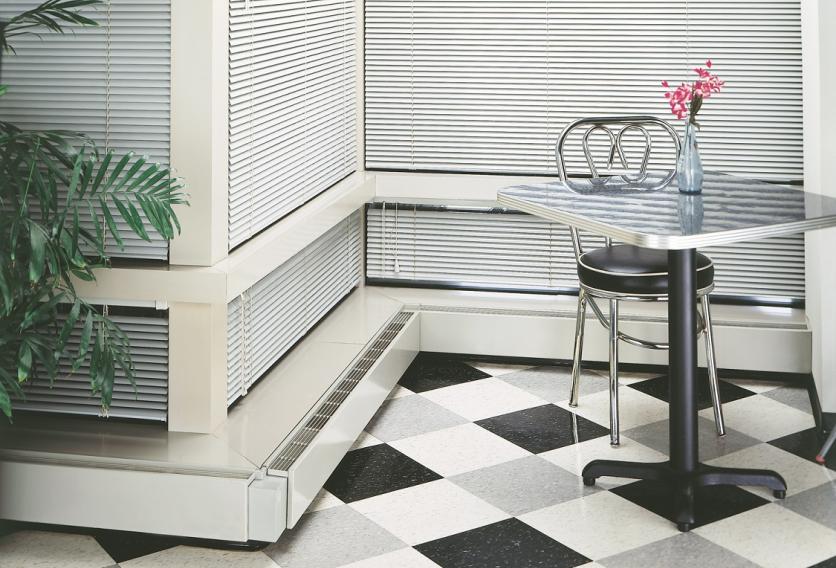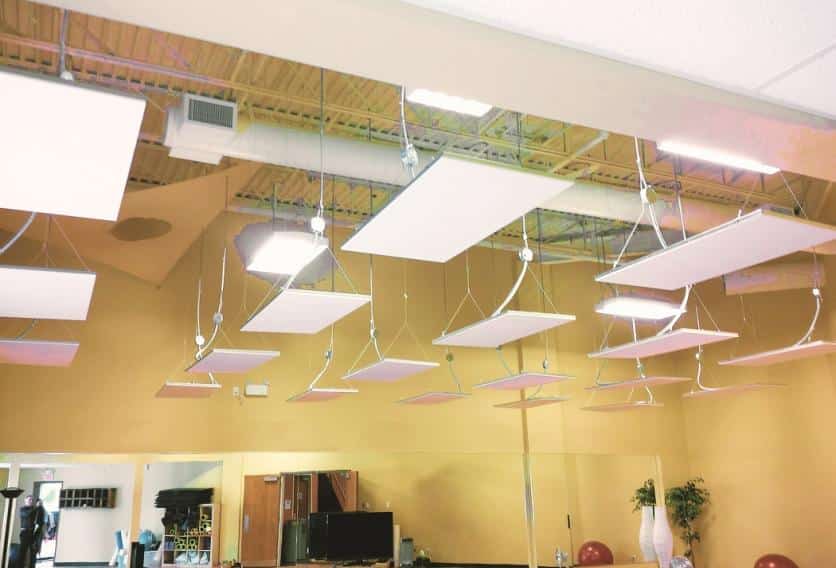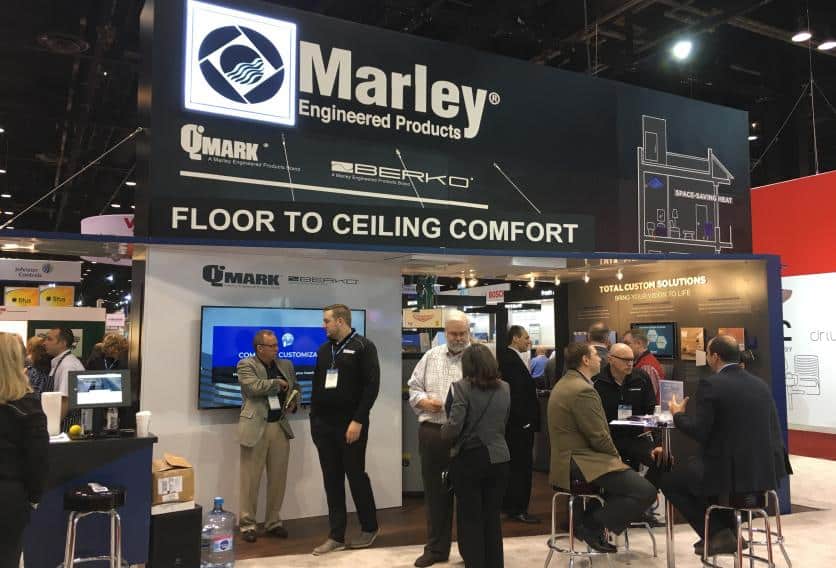News & Case Studies
Stay informed on the latest updates from Marley Engineered Products by exploring our News and Case Studies. Here, you’ll find valuable insights on industry trends, case studies, product innovations, and company announcements, keeping you connected to what’s happening at Marley. Check back regularly for project highlights, case studies and the latest news.
-

Infrared Heating Technology: Comfort Heat for Any Space Vodcast
March 9, 2025Welcome to our Infrared Heating Technology Vodcast — a behind-the-scenes look at the technology, performance, and stories driving one of our most trusted solutions. In this episode, we sit down with Infrared Heating Expert Kris Franz to discuss real-world Infrared Heat applications and explore what makes Marley’s infrared heating solutions a standout in the industry.Whether…
-

Balancing Appearance and Performance: Customizable Convection Heating
July 12, 2018The Air Conditioning, Heating & Refrigeration News recently featured our article describing the use of customizable convection heating for buildings with complex heating needs. The article highlights how there is no one-size-fits-all heating solution for every building. Rather, specifying architects and engineers must solve their distinct heating problems with customizable solutions to ensure optimal cost-efficiency…
-

Addressing the Diverse Heating Demands of Multi-use Buildings
June 15, 2018Multi-purpose facilities often present unique heating challenges that require customized heating solutions. No matter how a building is being used, there is an appropriate heating method available to address every need. Air Conditioning, Heating & Refrigeration News magazine recently featured our article that describes heating solutions for a multi-use building and how Marley’s diverse portfolio…
-

Convector Heaters – The Definitive Guide
April 27, 2018Offices, hotels, schools, retail stores, sports facilities and other building types typically have rooms that can be efficiently heated by the use of heaters, such as convectors, radiant ceiling panels or infrared radiant heaters. For these applications, the “appearance” of the heating unit is just as important as its performance. For the right combination of customization and performance, convectors may…
-

Customizable Marley Radiant Ceiling Panels Offer Cost-Efficient Overhead Heating for Discrete, Integrated Warmth
April 15, 2018Marley Engineered Products, a leader in high-performance, reliable heating and ventilation equipment, introduces QMark radiant ceiling panels that provide custom, targeted, hidden heat in a wide range of applications. Able to blend in seamlessly with any indoor building space, the radiant ceiling panels are designed to provide localized spot heating or primary heating where it’s needed. The panels can be specified…
-

Addressing the Diverse Heating Demands of Multi-Use Buildings
February 16, 2018By: Andrew Martin, Product Manager, Marley Engineered Products Typically when selecting heating solutions for a building, decisions are made based on its main function. It gets a bit more complicated, however, when the property is designed as a multi-purpose facility – possibly being used for retail, residential and office space all at once. These buildings often present…
-

AHR 2018
January 31, 2018Thanks for visiting Booth 5577! Marley Engineered Products showcased its floor-to-ceiling total custom solutions and made-to-order products and capabilities for custom heating solutions for any application. Our training presentations during the show gave an in-depth look into a few of our more creative custom heating projects for some prominent facilities across the country. Couldn’t make it…
-

New Year’s Resolutions for Electric Heating in 2017
December 29, 2017January is a great month for new beginnings and fresh starts. However, as well-intentioned as New Year’s resolutions are, every one of us has struggled to keep them up. Marley Engineered Products is here to help with some simple and effective resolutions for staying warm in 2017! Don’t surrender to poor heating in 2017. These…
-

Marley Products Keep Construction Sites Warm, Safe and Productive
October 10, 2017Keeping the Construction Site Warm, Safe and Productive By: Andrew Martin, Product Manager, Marley Engineered Products Creating ideal working conditions for construction sites is more than a matter of comfort – it’s also a concern of safety and efficiency. Cold temperatures can significantly hinder productivity, while proper heating can help keep workers safe and prevent…
-

Make The Summer Last Longer With Heating Solutions From Infrared
August 21, 2017Extend the Outdoor Summer Season with Infrared Heating Solutions By: Andrew Martin, Product Manager, Marley Engineered Products The days are longer, the nights are warmer and everyone wants to be outside. Who doesn’t love a summer breeze? Businesses often open their doors, windows, rooftops and patios during the warmer months to accommodate their customers’ desire…
-

Infrared Heaters Melt Away Safety Concerns For Parking Garage Ramps
January 20, 2017During construction of the 190-unit, 15-story JeffJack Apartments building in downtown Chicago, the owner sought an effective method to prevent snow and ice build-up on the building’s parking garage ramps during winter. Infrared heaters from Marley Engineered Products paved the way. Situated on the corner of North Jefferson Street and West Jackson Boulevard, the JeffJack building features…
-

Spot heating solutions – keeping cozy in every space
December 16, 2016When you’re looking to heat part of a building or home with cold spots, consider spot heating options. Cold spots that need heat include areas that may not have been included when the HVAC system was installed, such as new additions or spaces that were simply overlooked. In addition to comfort being affected by cold…
